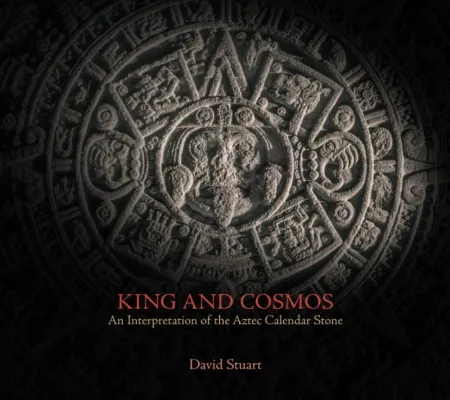King and Cosmos: An Interpretation of the Aztec Calendar Stone, a new book from Art History Professor David Stuart, is now available through Precolumbia Mesoweb Press and Amazon. In this book, Stuart focuses the singular iconic image of Aztec civilization, the Calendar Stone or Piedra del Sol of Tenochtitlan, expounding upon known evidence and offering new interpretations of its detailed imagery and iconography. Through the process, Stuart identifies the central face of the Calendar Stone as that of the Aztec emperor Moteuczoma II, suggesting that it is a political image as well as an image of the sun deity.
For a century or more the stone was seen as little more than an ornate image of the mythic sun named Tonatiuh, surrounded by elements of the Aztec calendar (hence its common name as the “Calendar Stone”). Taking a fresh approach to its likely physical setting as an altar in the market-plaza of Tenochtitlan, Stuart argues for a much more complex and dynamic monument, emphasizing a broader cosmological model that incorporates mythic time, history and political identity through many visually layered and embedded hieroglyphs. The central face, he posits, is explicitly labeled as a deified portrait of the emperor Moteczomah II, fused with the Mexica patron deity Huitzilopochtli, each in turn incorporated into a solar image. The stone’s elaborate form encapsulates a distinctively Mexica vision of a much older Mesoamerican sense of power and its place in the wider cosmos.


